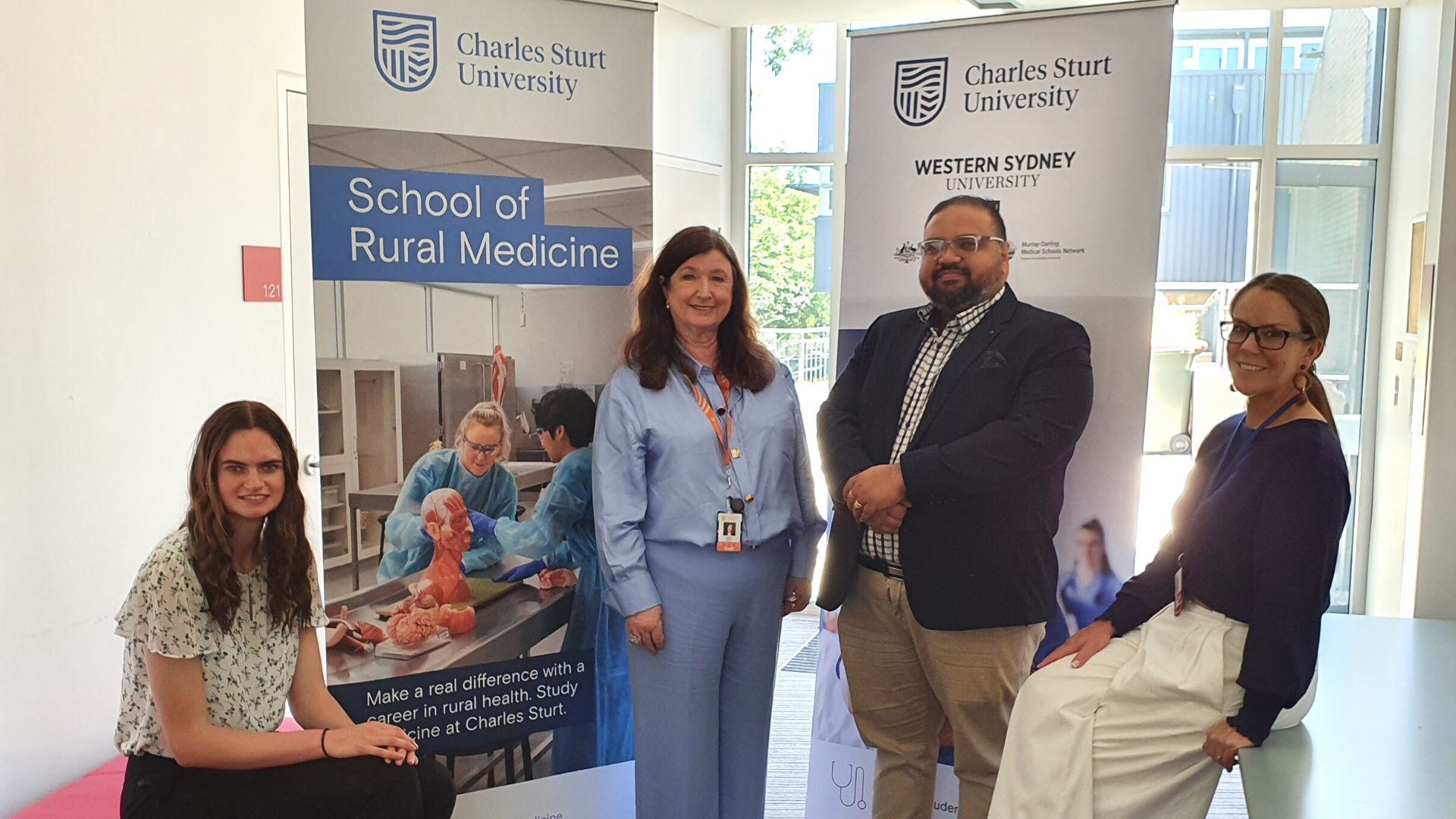- The Charles Sturt University School of Rural Medicine (SRM) hosted a community engagement session on Wednesday 6 December
- The event brought together stakeholders from the communities of the School of Rural Medicine’s nine rural clinical schools across regional NSW and Victoria
- An objective was to increase understanding of the processes behind the recruitment, support and training of the SRM to meet the needs of the rural communities
Communities across regional NSW and into Victoria will benefit from increased understanding of the program behind Charles Sturt University’s School of Rural Medicine (SRM) after a community engagement day was held at Charles Sturt in Orange.
The day saw more than 50 stakeholders attend from the nine rural clinical school areas that are operated by the Charles Sturt School of Rural Medicine, which provide students of the Doctor of Medicine with work placement experience at a health facility during the course of their studies. Students spend years three to five of their medical degree in one rural clinical school.
Stakeholders were invited to hear from the SRM’s representatives around the unique rural generalist medical education program. The SRM also benefited from hearing directly from their stakeholders on how a medical school can best support a local community.
Senior Lecturer and Director of Research and Evaluation from the SRM Dr Catherine Keniry said it was important to bring stakeholders together from across the nine rural clinical schools and hear directly about the diverse needs of the communities they represented.
“Our Charles Sturt University rural clinical schools span from the Northern Rivers of NSW through Central West NSW and down to Swan Hill in Victoria,” Dr Keniry said.
“This means we are training doctors to offer their vital services across a diverse footprint of communities, so it is essential that we engage with these communities to ensure the processes of the school meet their healthcare needs.”
Dr Keniry said the day opened with an overview of the SRM, its purpose, mission and research strategy. Speakers then covered various issues affecting rural communities.
Attendees also received a tour of the School’s Anatomy and Simulation Laboratory facilities at the North Orange campus.
The afternoon session covered the School’s funding and research focus areas in addition to a tour of the School’s second site at the Bloomfield campus on Forest Road.
Attendees also broke off into groups to workshop issues, challenges and potential solutions.
Dean of the Charles Sturt School of Rural Medicine Professor Lesley Forster said the day was extremely valuable as it reflected the School’s mantra of taking a community-led approach to rural generalism.
“Rural generalists play a crucial role in covering a wide variety of health issues across the diverse landscape of Australian rural, regional and remote communities,” Professor Forster said.
“It is therefore crucial that we have an ongoing, two-way relationship with the communities our doctors-in-training will represent, who are being trained in rural generalism.”
Attendees represented the research, clinical and community member sectors.
ENDS






Social
Explore the world of social